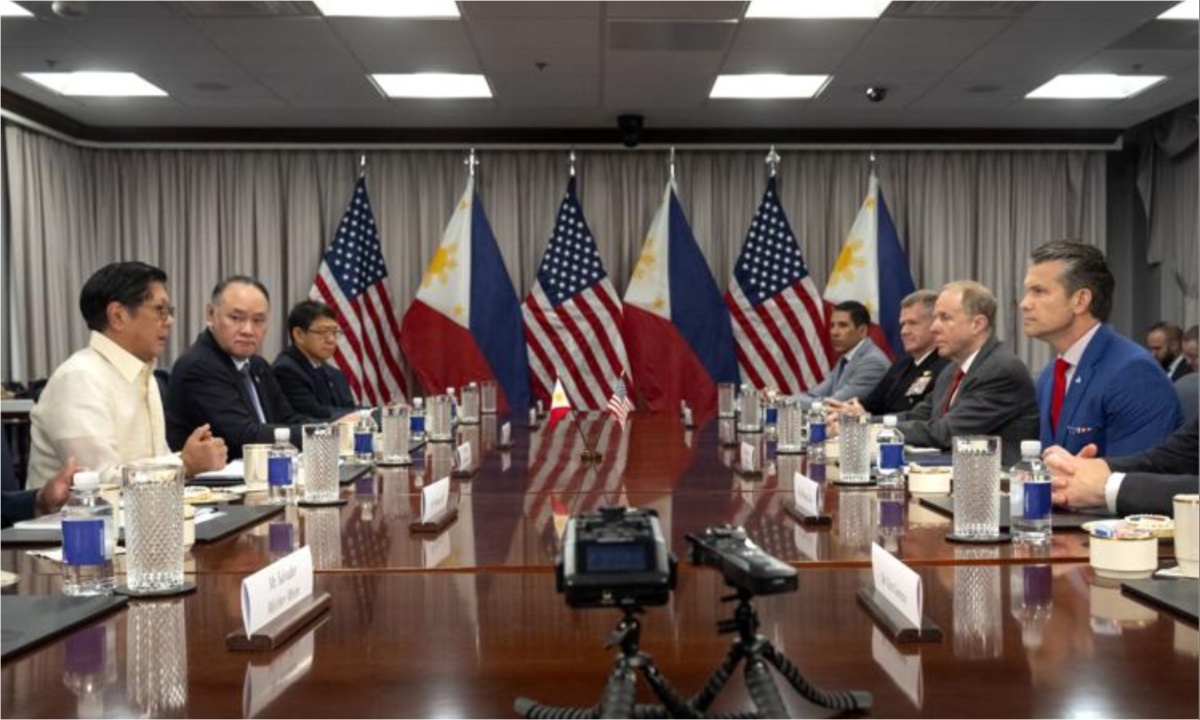President Donald Trump is set to welcome Philippine President Ferdinand Marcos Jr. to the White House, underscoring efforts by both nations to strengthen security and economic ties amidst changing geopolitical dynamics in the Indo-Pacific.
Marcos, who has already met with U.S. Secretary of State Marco Rubio and Defense Secretary Pete Hegseth, is the first Southeast Asian leader to visit Trump during his second term. His visit highlights the strategic importance of the U.S.-Philippine alliance as tensions with China, particularly in the South China Sea, continue to escalate.
Rising Tensions with China and Trade Talks Dominate Marcos’s U.S. Visit Agenda
The visit takes place against a backdrop of heightened friction between China and its neighbors, especially over the contested Scarborough Shoal. The U.S. continues to view China as its main global rival and is prioritizing military and economic engagement in the Asia-Pacific region to deter Chinese aggression.
While Trump is managing crises in other global hotspots like Ukraine and Gaza, his administration remains focused on fortifying regional alliances, with the Philippines being a key partner.
Trade is also a major point of discussion during Marcos’s visit. President Trump has threatened to impose 20% tariffs on Filipino goods starting August 1 if a new deal isn’t reached.
In response, Marcos expressed readiness to negotiate a bilateral trade agreement that would be mutually beneficial. Philippine Finance Secretary Ralph Recto indicated Manila might offer zero tariffs on certain U.S. goods to avoid Trump’s tariff threats. White House Press Secretary Karoline Leavitt confirmed trade would be on the agenda.
Strengthening Defense Commitments While Pursuing Diplomatic Engagements in a Tense Region
Defense cooperation is a cornerstone of the U.S.-Philippines relationship. At the Pentagon, Secretary Hegseth reaffirmed America’s commitment to its mutual defense treaty, stressing that this includes defending Philippine forces and vessels in the South China Sea.
Marcos echoed the sentiment, emphasizing that their partnership is growing stronger, especially with increased joint exercises and U.S. support for modernizing the Philippine military amid ongoing regional threats.
Despite its firm approach to deterrence, the U.S. is maintaining open diplomatic channels with China. Secretary Rubio recently met with Chinese Foreign Minister Wang Yi to discuss areas of potential cooperation and the importance of managing differences.
At the same time, President Marcos and Secretary Rubio focused on deepening economic ties and improving supply chain resilience. As a key regional ally, the Philippines continues to manage its relationships with both the U.S. and China amid the ongoing tensions and disputes in the South China Sea.

Leave a Reply